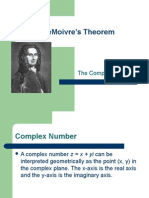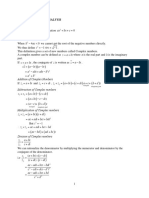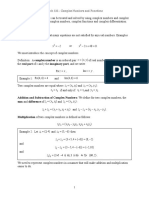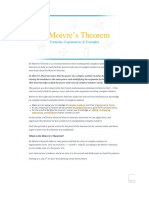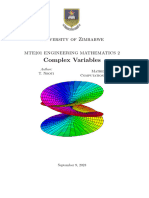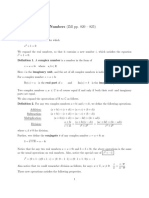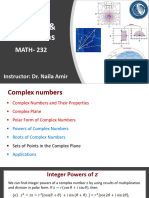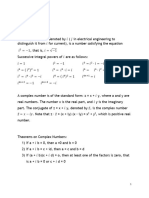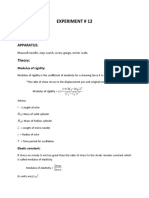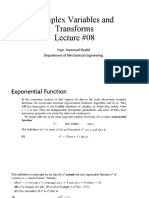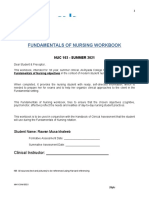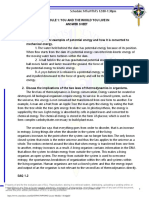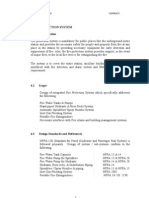0% found this document useful (0 votes)
84 views27 pagesComplex Variables and Transforms Lecture #04: Engr. Hammad Khalid Department of Mechanical Engineering
- DeMoivre's theorem states that if z = r(cosθ + i sinθ) is a complex number, then zn = rn(cos(nθ) + i sin(nθ)), where n is a positive integer.
- It allows one to raise complex numbers to integer powers in polar form without having to multiply the number by itself n times.
- The theorem can be used to find complex roots and simplify exponential functions involving complex numbers.
Uploaded by
HaroonCopyright
© © All Rights Reserved
We take content rights seriously. If you suspect this is your content, claim it here.
Available Formats
Download as PPT, PDF, TXT or read online on Scribd
0% found this document useful (0 votes)
84 views27 pagesComplex Variables and Transforms Lecture #04: Engr. Hammad Khalid Department of Mechanical Engineering
- DeMoivre's theorem states that if z = r(cosθ + i sinθ) is a complex number, then zn = rn(cos(nθ) + i sin(nθ)), where n is a positive integer.
- It allows one to raise complex numbers to integer powers in polar form without having to multiply the number by itself n times.
- The theorem can be used to find complex roots and simplify exponential functions involving complex numbers.
Uploaded by
HaroonCopyright
© © All Rights Reserved
We take content rights seriously. If you suspect this is your content, claim it here.
Available Formats
Download as PPT, PDF, TXT or read online on Scribd
/ 27




